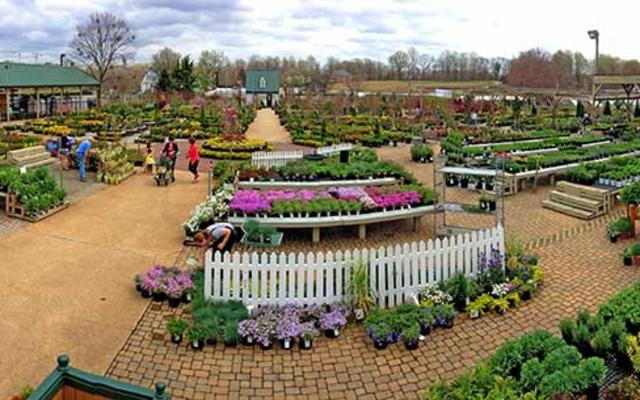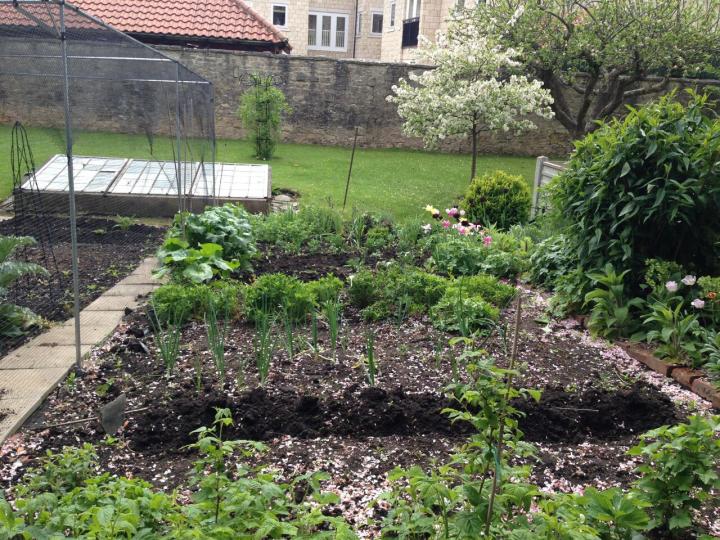Essential Care Strategies for Homestead Gardening
Essential Care Strategies for Homestead Gardening
Blog Article
Discover Vital Tips for Effective Horticulture Techniques and Practices
Gardening, typically seen as an easy leisure activity, encompasses a variety of strategies and methods that can substantially influence the end result of your efforts. By focusing on important aspects such as soil health, effective watering approaches, and ideal plant choice, gardeners can create a flourishing ecosystem that supports vivid growth. Moreover, comprehending the nuances of bug management and seasonal upkeep can even more boost efficiency. Yet, numerous enthusiasts ignore vital information that can make or break their horticulture success-- exploring these neglected aspects may disclose the trick to growing a growing garden.
Recognizing Soil Health And Wellness
Soil wellness is a fundamental element of successful gardening, as it directly affects plant development, vitamins and mineral accessibility, and community equilibrium. Healthy and balanced dirt is identified by an abundant biodiversity of microbes, raw material, and a balanced pH degree, which with each other create an atmosphere for plant advancement.
To understand soil health, one need to consider its physical, chemical, and organic homes. The texture and framework of dirt affect its ability to keep wetness and nutrients, while the chemical make-up identifies the availability of crucial elements like potassium, phosphorus, and nitrogen. Regular soil testing is critical to assess these factors, enabling garden enthusiasts to make enlightened choices relating to amendments and plant foods.
Additionally, advertising organic task within the soil is vital for preserving its health and wellness. Practices such as composting, crop rotation, and making use of cover crops can improve microbial diversity, boost nutrient cycling, and decrease dirt disintegration. By prioritizing soil wellness, garden enthusiasts not just enhance plant growth yet additionally contribute to a sustainable ecosystem, making sure that their gardening methods are eco responsible and resistant over time.
Effective Sprinkling Strategies
Making sure that plants obtain the appropriate quantity of water is important for their health and wellness and development, particularly when paired with a solid structure of dirt wellness (Homestead Gardening). Reliable watering strategies can considerably influence plant vitality, lowering water waste and promoting ideal growth
One fundamental approach is deep watering, which motivates roots to grow deeper into the soil, enhancing dry spell resistance. This technique generally entails sprinkling much less often however in larger amounts, permitting moisture to penetrate the root zone extensively. Timing is additionally important; early morning is the suitable time to water, as it decreases dissipation and allows foliage to completely dry throughout the day, decreasing disease threats.
In addition, using compost can assist retain soil moisture and regulate temperature, additional aiding efficient sprinkling techniques. Making use of a drip irrigation system can also give targeted wetness straight to the roots, making certain that water reaches where it's most needed while conserving sources.
Checking rainfall and soil wetness degrees can guide modifications in your watering schedule, ensuring plants obtain consistent hydration without over-saturation. By embracing these reliable sprinkling strategies, gardeners can promote a flourishing setting for their plants to thrive.
Plant Selection and Placement
How can the right plant option and critical positioning transform a garden right into a flourishing ecological community? The harmony between plant varieties and their placement is essential for developing a dynamic garden. When selecting plants, take into consideration variables such as environment, soil type, and sunshine exposure. Native species are often the ideal option as they are adjusted to neighborhood conditions and require less maintenance.
Strategic positioning entails arranging plants according to their development habits and needs. Taller plants need to be positioned at the back of boundaries to avoid shielding much shorter plants. Furthermore, organizing plants with similar water and light requirements can boost their development and decrease competition for resources.
Including a diversity of plants not only adds visual appeal however additionally promotes biodiversity, drawing in useful bugs and pollinators. Consider the seasonal changes in your yard; select a mix of annuals, evergreens, and perennials to guarantee year-round passion.
Last but not least, bear in mind to evaluate the fully grown size of plants prior to planting to prevent overcrowding and ensure adequate air flow. Thoughtful plant selection and tactical positioning produce an unified atmosphere, enabling your garden to grow while decreasing challenges.
Parasite and Illness Monitoring
Reliable insect and disease monitoring is crucial for keeping a healthy and balanced yard ecosystem - Homestead Gardening. A great post to read proactive technique, integrating social, organic, and chemical approaches, can substantially minimize the effect of pests and illness on your plants

Organic controls, such as presenting advantageous bugs like ladybugs or predative browse around this web-site termites, can maintain pest populations in check without damaging the setting. In addition, keeping plant health through appropriate watering, fertilization, and trimming will strengthen their strength against illness.
When treatment is needed, decide for targeted chemical treatments, making sure to comply with application guidelines to lessen injury to non-target organisms. Constantly prioritize lasting techniques, as they advertise long-lasting yard health and environmental balance. By incorporating these strategies, gardeners can efficiently handle illness and insects, guaranteeing thriving plants and an efficient yard.

Seasonal Upkeep Practices
In springtime, focus on dirt preparation by testing pH degrees and including essential amendments. Regularly examine emerging plants for parasites and illness.
As summer methods, make sure sufficient watering while keeping an eye on for indications of tension or disease. Prune back overgrown plants to encourage air flow and reduce moisture around vegetation. This technique not just boosts plant wellness but also advertises flowering and fruiting.
With the arrival of autumn, it's this contact form time to plan for winter season. Clean up dropped leaves and debris to stop pest problems, and take into consideration planting cover crops to improve soil wellness. This season is also excellent for dividing perennials and growing spring-flowering light bulbs.
Conclusion
Successful gardening joints on the integration of audio techniques in dirt health and wellness, watering, plant selection, pest monitoring, and seasonal maintenance. By focusing on dirt testing and microbial variety, employing efficient sprinkling methods, and picking proper plants, gardeners can develop thriving communities.
By prioritizing essential components such as soil wellness, effective sprinkling strategies, and suitable plant choice, garden enthusiasts can produce a thriving ecosystem that supports vibrant growth. By prioritizing dirt health and wellness, garden enthusiasts not only enhance plant development but likewise add to a lasting ecosystem, ensuring that their gardening practices are ecologically responsible and durable over time.
Taller plants should be placed at the back of boundaries to prevent shielding much shorter plants. Clean up fallen leaves and particles to stop insect invasions, and think about planting cover plants to improve soil health and wellness.Effective gardening hinges on the integration of sound methods in soil health and wellness, watering, plant option, bug administration, and seasonal maintenance.
Report this page